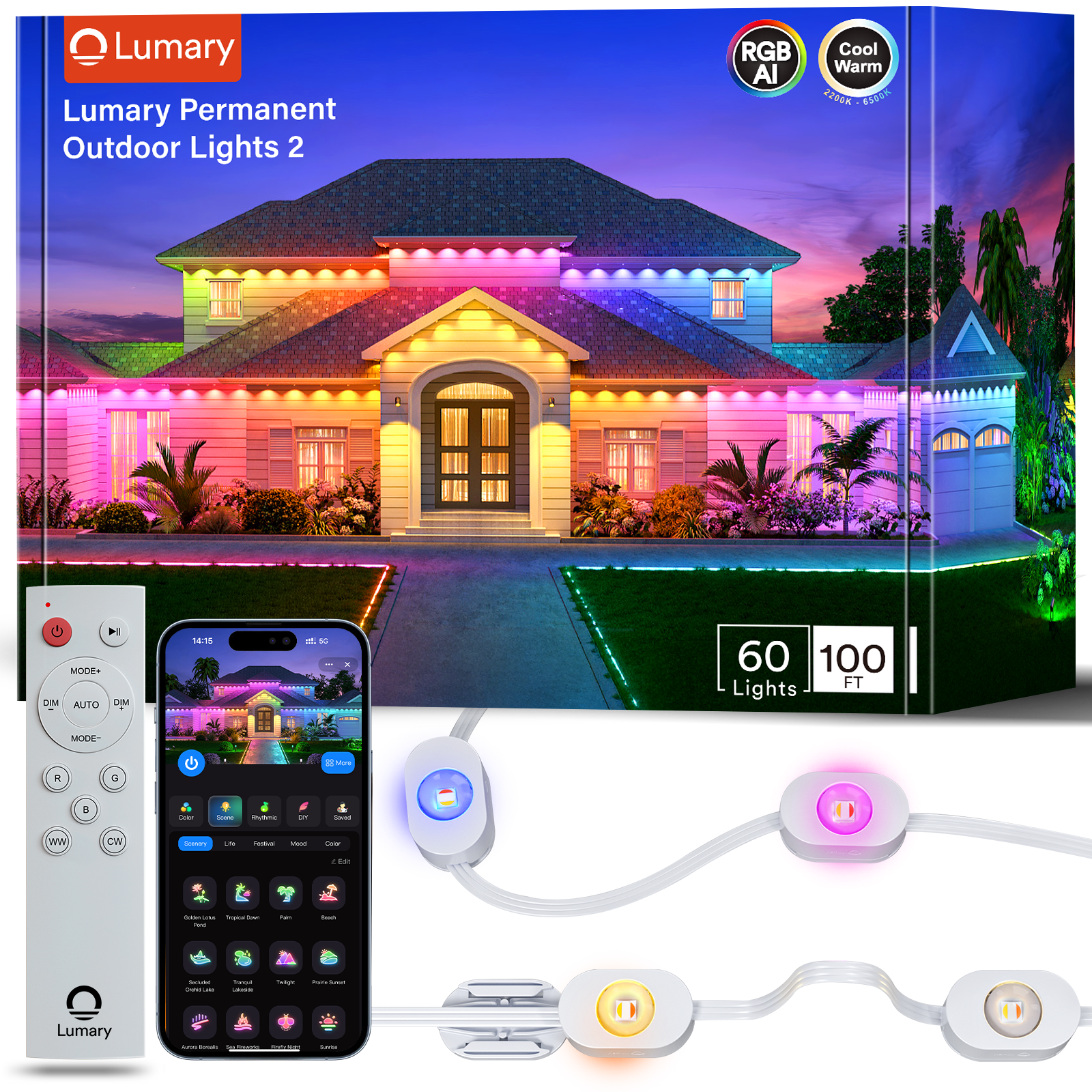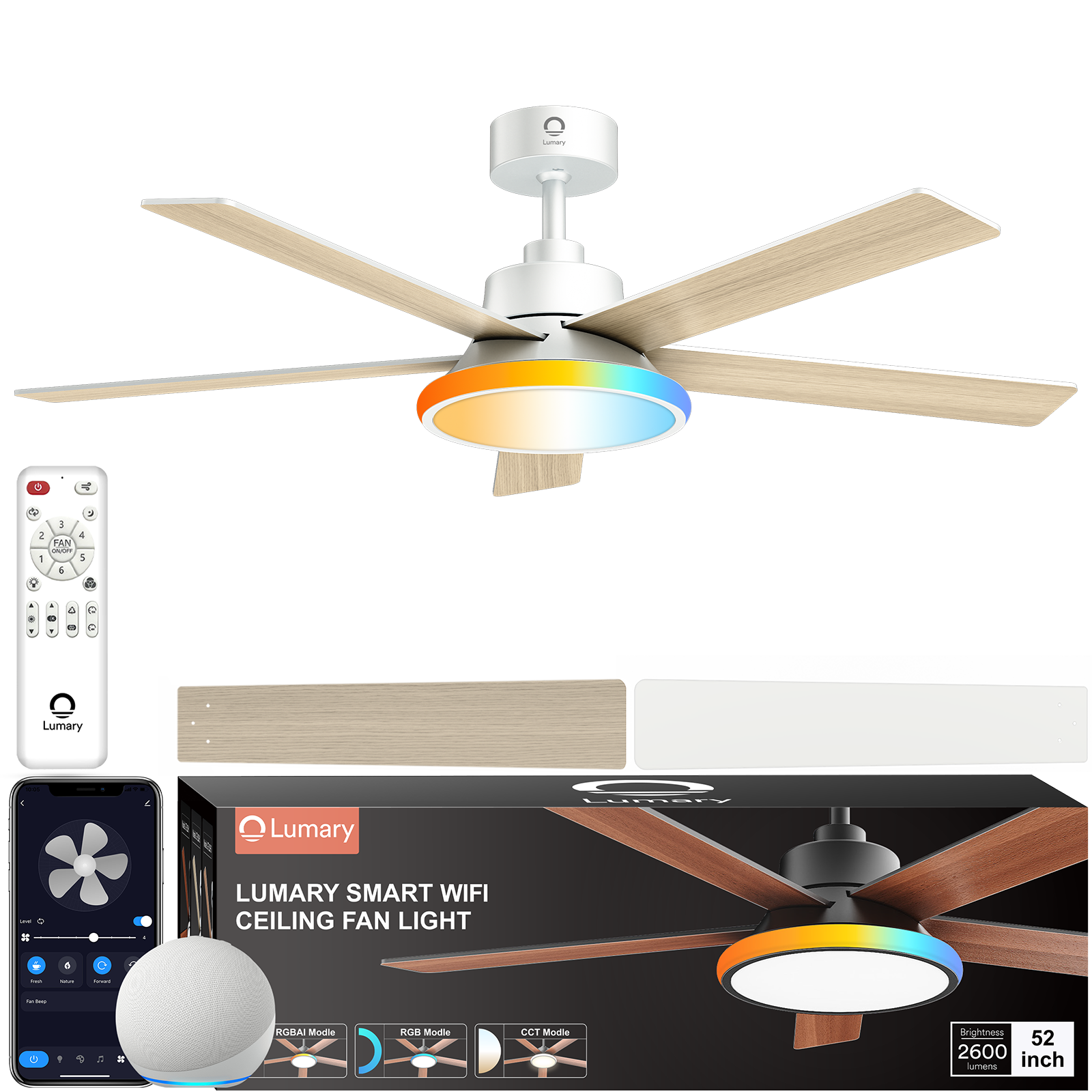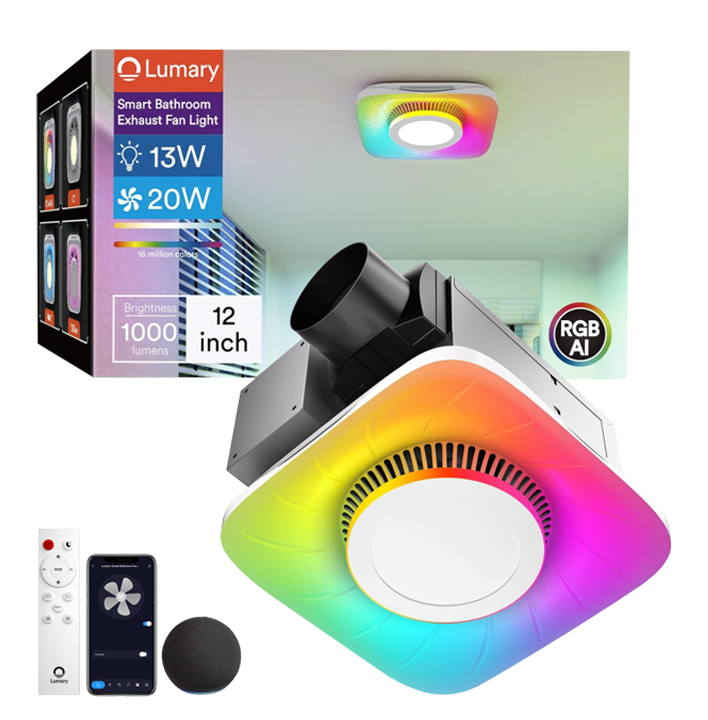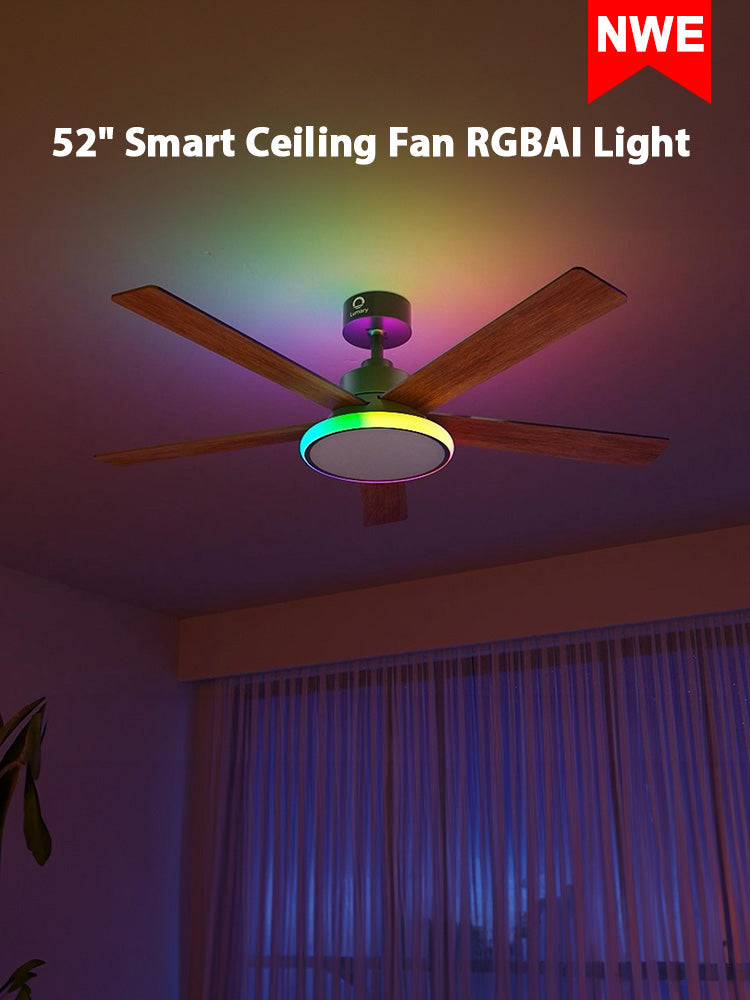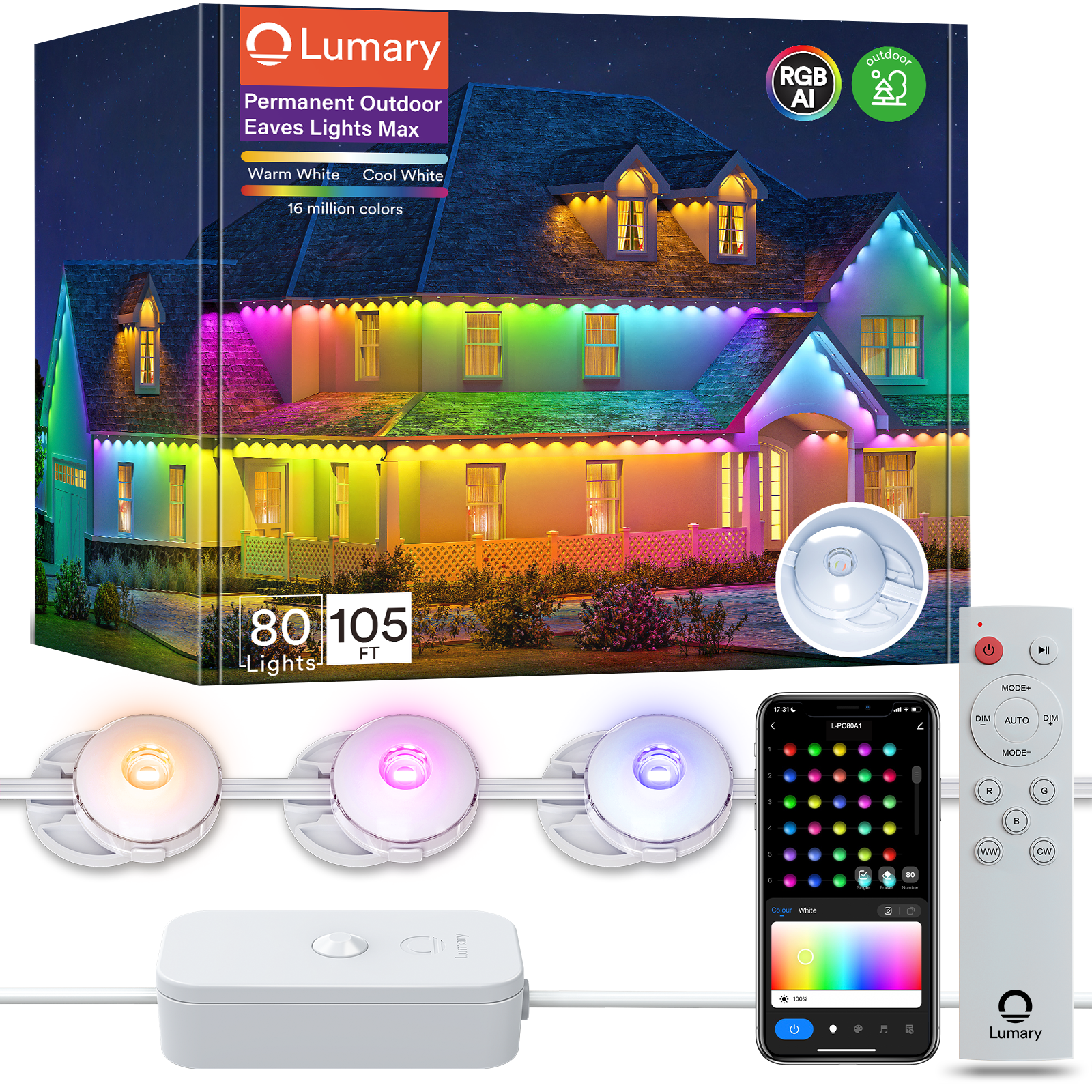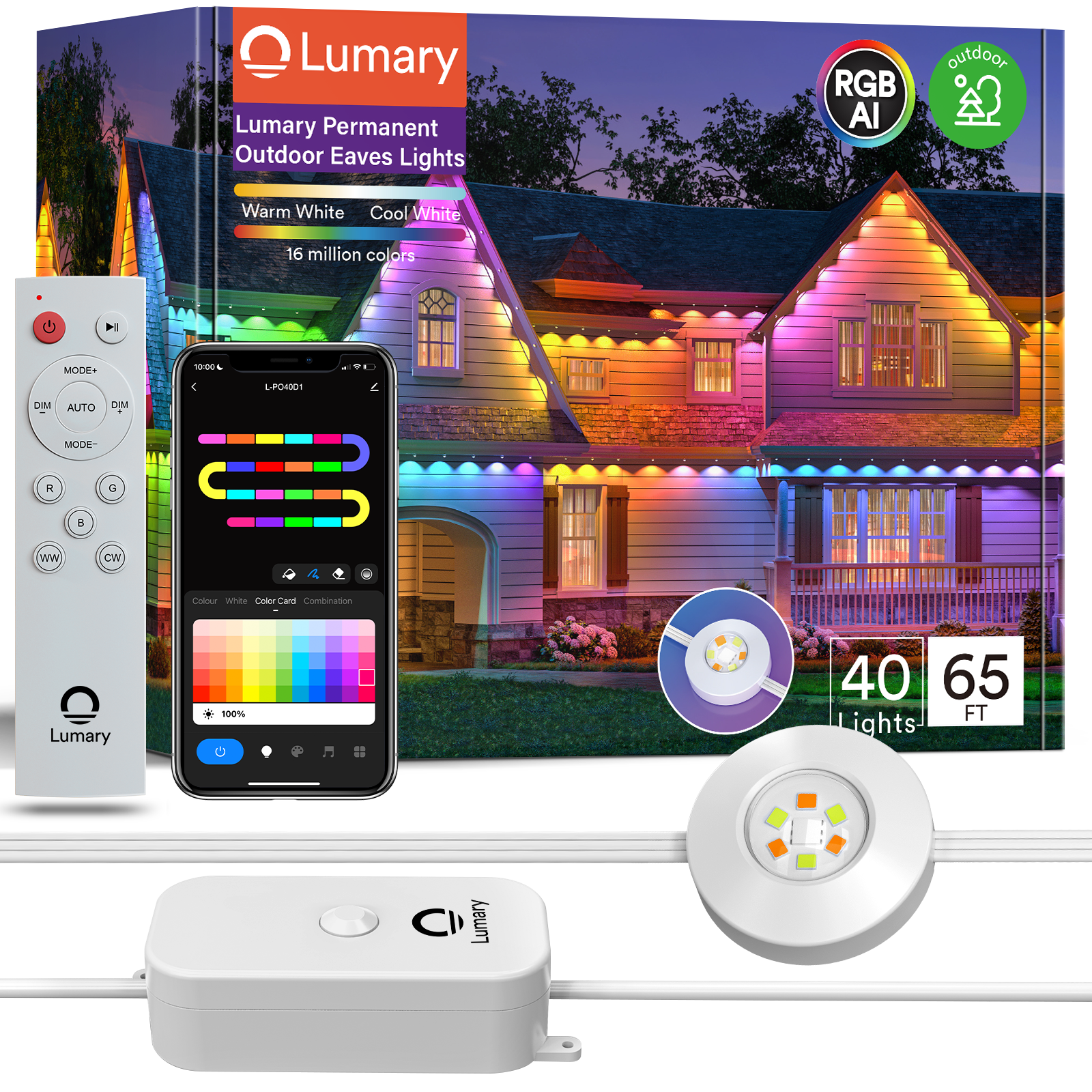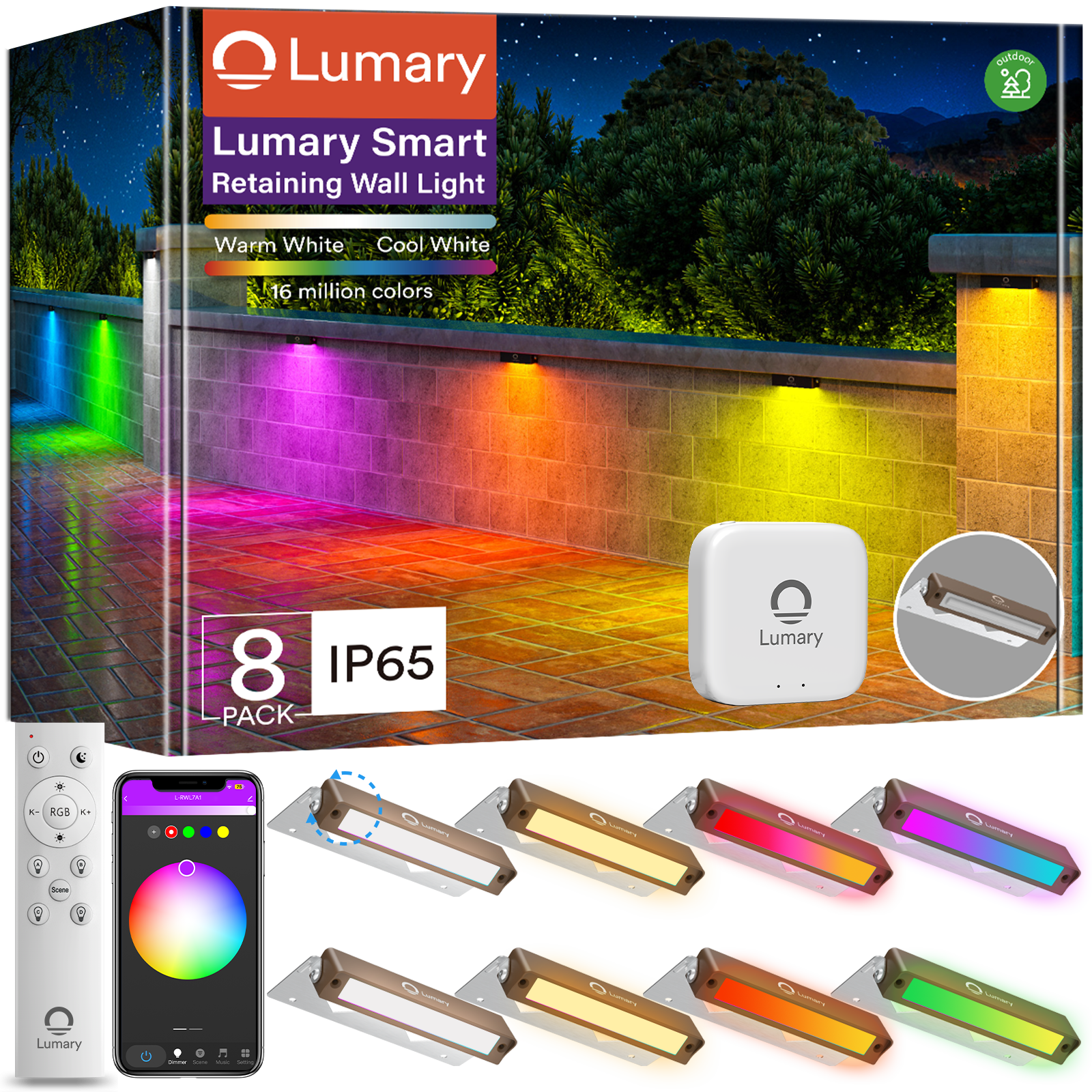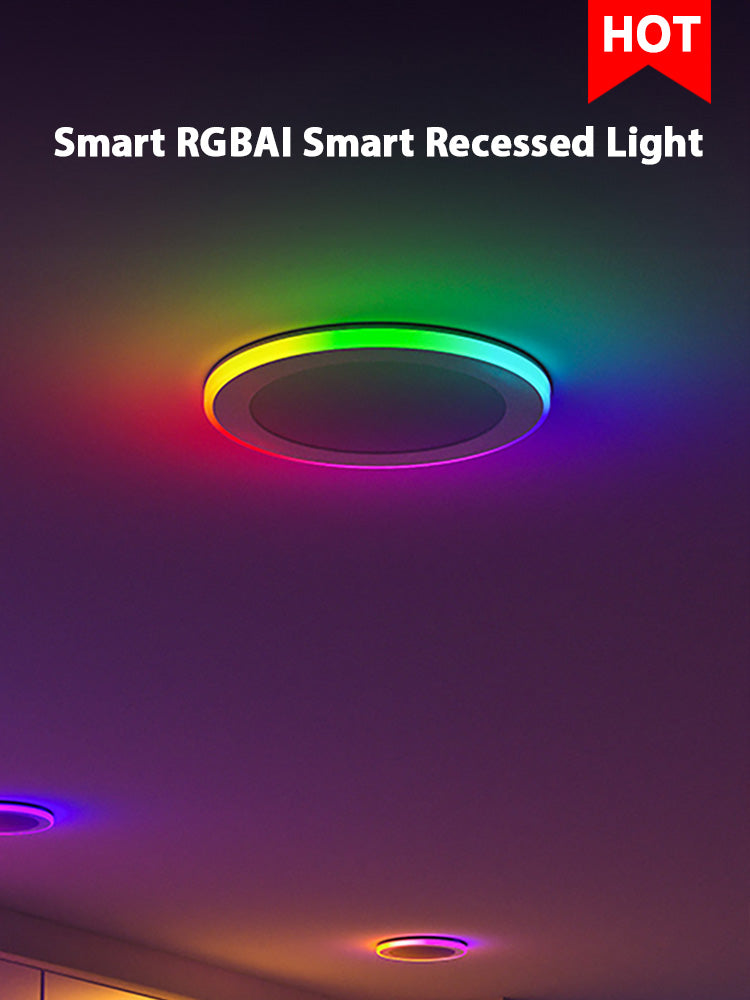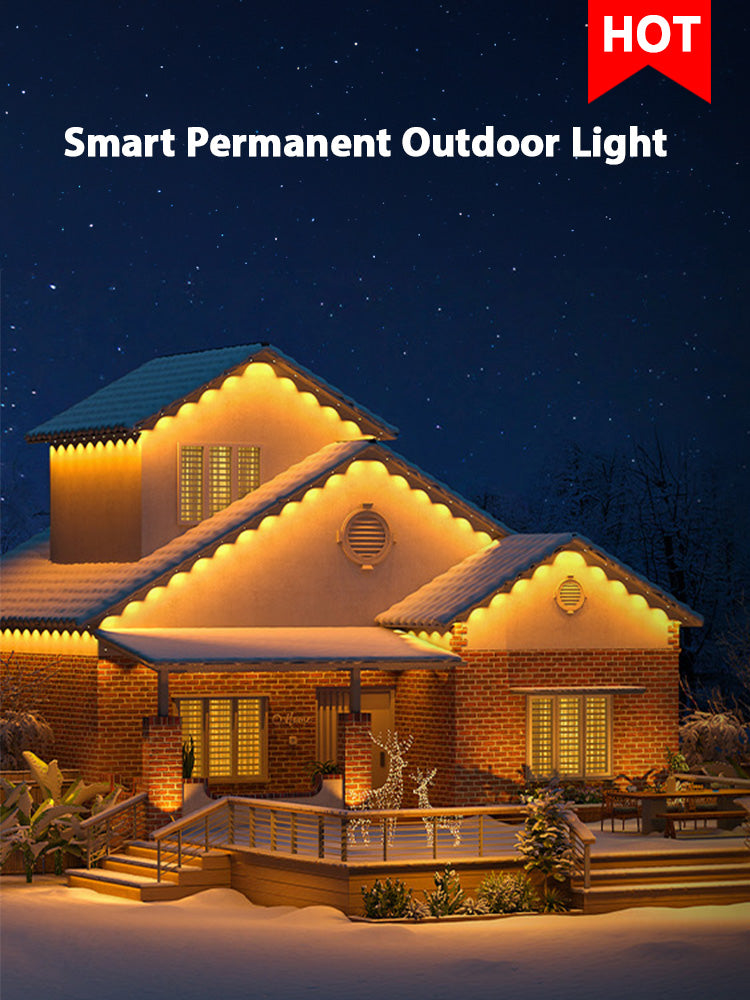Lighting plays a crucial role in shaping the atmosphere of your home. Choosing the best LED house lights means understanding what works for your space. LEDs are not only energy-efficient but also long-lasting, with some bulbs lasting up to 25 times longer than traditional incandescent options. They use up to 90% less energy, making them a cost-effective and eco-friendly choice. Whether you're looking to brighten up your kitchen or create a cozy vibe in your living room, you can find the light that's right for you by focusing on brightness, color temperature, and compatibility.
Key Takeaways

-
Focus on brightness measured in lumens rather than watts to choose the right LED bulbs for your home.
-
Tailor the color temperature of your lights to match the purpose of each room: warm lighting for relaxation areas and cool lighting for workspaces.
-
LEDs are energy-efficient, using up to 90% less energy than incandescent bulbs, which can significantly lower your electricity bills.
-
Consider compatibility with fixtures and dimmers to avoid issues like flickering or buzzing; always check specifications before purchasing.
-
Calculate long-term savings by comparing the energy costs and lifespan of LED bulbs to traditional options, ensuring a smart investment.
-
Explore smart LED lighting options for added convenience, allowing you to control brightness and color settings through apps or voice commands.
-
Look for warranties and ENERGY STAR certifications when selecting LED bulbs to ensure quality and efficiency.
Brightness and Lumens
When it comes to lighting your home, understanding brightness is key. Brightness is measured in lumens, which indicate the amount of visible light a bulb emits. Unlike traditional incandescent bulbs, where wattage was often used as a proxy for brightness, LED lights focus on lumens to provide a more accurate measure of light output. This shift can feel confusing at first, but once you grasp the basics, it becomes much easier to make informed choices.
Understanding Lumens vs. Watts
In the past, you might have chosen a 60-watt bulb for your living room or a 100-watt bulb for your kitchen. However, watts only measure energy consumption, not brightness. LEDs have changed the game by offering high brightness with minimal energy use. For example, an LED bulb producing 800 lumens (equivalent to a 60-watt incandescent) may only use 8-12 watts of power. This efficiency not only saves energy but also reduces your electricity bills.
To make the right choice, always check the lumen rating on the packaging. Higher lumens mean brighter light, so focus on this number rather than wattage. Additionally, consider the lumens-per-watt ratio, which reflects the bulb's energy efficiency. A higher ratio means you get more light for less energy, making it a smart choice for both your wallet and the environment.
How to Choose the Right Brightness for Each Room
Different rooms in your home serve different purposes, so their lighting needs vary. By tailoring the brightness to each space, you can create the perfect ambiance while ensuring functionality.
Living Room and Bedroom Lighting
For living rooms and bedrooms, aim for a softer, more relaxing light. Bulbs with a lumen range of 1,000 to 2,000 work well here. This level of brightness creates a cozy atmosphere, ideal for unwinding after a long day. Consider using dimmable LED bulbs to adjust the light intensity based on your mood or activity.
Kitchen and Bathroom Lighting
Kitchens and bathrooms require brighter, task-oriented lighting. In these spaces, opt for bulbs with 2,000 to 4,000 lumens. This ensures you have enough light for activities like cooking, cleaning, or applying makeup. For kitchens, under-cabinet LED strips can provide focused lighting for countertops, while ceiling fixtures can illuminate the entire space effectively.
Outdoor and Accent Lighting
Outdoor areas and accent lighting need a balance between functionality and aesthetics. For pathways or patios, choose bulbs with 500 to 1,500 lumens to ensure safety without overwhelming brightness. Accent lighting, such as wall sconces or spotlights, can range from 200 to 800 lumens, depending on the effect you want to achieve. If you're looking for a versatile option, the Lumary Permanent Outdoor Lights Max offers customizable brightness and color settings, making it perfect for any occasion.
By understanding lumens and tailoring the brightness to each room, you can enhance your home's ambiance and functionality. Always remember to choose your color and brightness carefully to match the purpose of the space.
Color Temperature
When choosing LED lights, understanding color temperature is essential. It determines the mood and functionality of your space. Measured in kelvins (K), color temperature ranges from warm, yellowish tones to cool, bluish hues. Picking the right one can transform how a room feels and functions.
What is Color Temperature?
Color temperature refers to the appearance of light emitted by a bulb. It’s measured on a Kelvin scale, which typically ranges from 2000K to 6500K for residential lighting. Lower Kelvin values produce warm, cozy light, while higher values create cool, bright light. For example:
-
2000K-3000K: Warm, soft light resembling candlelight or traditional incandescent bulbs.
-
3100K-4500K: Neutral white light, ideal for task-oriented spaces.
-
4600K-6500K: Cool, daylight-like light that enhances focus and visibility.
Understanding this scale helps you match the light to your needs, whether you’re relaxing in the living room or working in your home office.
Warm vs. Cool Lighting: Which is Best for Your Space?
The choice between warm and cool lighting depends on the purpose of the room. Each type serves a unique function and creates a specific ambiance.
Warm Lighting for Relaxation Areas
Warm lighting, typically between 2000K and 3000K, works best in areas where you unwind. It creates a welcoming and calming atmosphere, perfect for bedrooms, living rooms, and dining spaces. This type of light mimics the glow of a sunset, making it ideal for relaxation. Use warm LED bulbs in table lamps or wall sconces to enhance the cozy vibe.
Cool Lighting for Workspaces and Kitchens
Cool lighting, ranging from 4000K to 5000K, is better suited for functional spaces. It provides bright, crisp illumination that boosts alertness and focus. Kitchens, bathrooms, and home offices benefit from this type of light. For instance, under-cabinet LED strips in the kitchen can make food prep easier, while cool-toned desk lamps can improve productivity in your study. Cooler light also works well in healthcare settings, where precision and clarity are crucial.
How to Read Kelvin Ratings on LED Bulbs
Reading Kelvin ratings on LED bulb packaging is straightforward. Most manufacturers display the Kelvin value prominently, often alongside terms like "warm white" or "cool daylight." Here’s how to interpret them:
-
Look for the Kelvin number: A lower number means warmer light, while a higher number indicates cooler light.
-
Match the Kelvin rating to your needs: For a cozy bedroom, choose bulbs labeled 2700K-3000K. For a bright workspace, go for 4000K-5000K.
-
Consider the room’s purpose: Always align the color temperature with the activities performed in the space.
By understanding Kelvin ratings, you can confidently select the right LED bulbs for every room in your home.
Energy Efficiency and Lifespan
When it comes to lighting your home, energy efficiency and lifespan are two of the most important factors to consider. LED lights excel in both areas, making them a smart choice for any household. Let’s explore why these lights stand out and how they can save you money over time.
Why LEDs are More Energy Efficient
LEDs are known for their incredible energy efficiency. Unlike traditional incandescent bulbs, which waste most of their energy as heat, LEDs convert nearly all their energy into light. This means they use up to 90% less energy than incandescent options. For example, an efficient LED bulb producing the same brightness as a 60-watt incandescent bulb only uses about 8-12 watts. This significant reduction in energy consumption not only lowers your electricity bills but also reduces your carbon footprint.
Switching to energy-efficient LED bulbs can make a noticeable difference in your home. Imagine replacing all your old bulbs with LEDs—you could cut your lighting energy use by nearly half. Plus, with advancements in LED technology, these bulbs now offer even better performance at lower costs. It’s no wonder that LEDs accounted for *48% of all installed lighting units in 2020*, a huge leap from just 8% in 2015.
Understanding LED Lifespan and Warranty
One of the standout features of LEDs is their impressive lifespan. A quality LED light can last anywhere from 25,000 to 50,000 hours, depending on the bulb and how often you use it. To put that into perspective, if you use an LED bulb for about five hours a day, it could last over 13 years! Compare that to traditional incandescent bulbs, which typically burn out after just 1,000 hours, and the difference becomes clear.
This long lifespan means fewer replacements, saving you time and money. Many LED manufacturers also offer warranties, giving you peace of mind about your investment. When shopping for LEDs, check the warranty details to ensure you’re covered in case of defects or early failures. A good warranty reflects the manufacturer’s confidence in their product and adds extra value to your purchase.
How to Calculate Long-Term Savings with LEDs
Switching to LEDs isn’t just good for the environment—it’s also great for your wallet. While the upfront cost of an LED bulb might be higher than a traditional bulb, the long-term savings more than make up for it. Here’s how you can calculate your potential savings:
-
Energy Costs: Start by comparing the wattage of your current bulbs to that of an LED bulb with similar brightness. For example, replacing a 60-watt incandescent bulb with an 8-watt LED saves 52 watts per hour. Multiply this by the number of hours you use the bulb daily and the cost per kilowatt-hour (kWh) in your area to see how much you’ll save on energy.
-
Lifespan Savings: Factor in the lifespan of the bulb. Since LEDs last 25 to 50 times longer than incandescent bulbs, you’ll buy far fewer replacements over the years. This reduces both the cost of the bulbs and the hassle of frequent changes.
-
Maintenance Costs: If you use LEDs in hard-to-reach fixtures, their long lifespan means you’ll spend less time and effort replacing them. This is especially valuable for outdoor or high-ceiling lights.
By switching to energy-efficient LED bulbs, you can enjoy lower energy bills, fewer replacements, and reduced maintenance costs. Over time, these savings add up, making LEDs a cost-effective and eco-friendly choice for your home.
Compatibility with Fixtures and Dimmers

Choosing the right light bulb for your home involves more than just brightness and color temperature. You also need to ensure that your LED bulbs are compatible with your fixtures and dimmers. This step is crucial for achieving optimal performance and avoiding common issues like flickering or buzzing.
Checking Fixture Compatibility
Not all LED bulbs work seamlessly with every fixture. Before purchasing, check the specifications of both the bulb and the fixture. Look for details like the base type and wattage limits. For example, if your fixture supports an E26 base, make sure the LED bulb you choose matches this requirement. Similarly, ensure the wattage of the bulb doesn’t exceed the fixture’s maximum rating.
Some fixtures, like enclosed ones, may not be suitable for certain LED bulbs. LEDs generate less heat than traditional bulbs, but they still need proper ventilation to avoid overheating. If you’re using an enclosed fixture, look for bulbs labeled as “suitable for enclosed fixtures.” This ensures safety and extends the lifespan of your LED bulb.
Choosing LED Bulbs for Dimmable Fixtures
If you want to use a dimmer switch, selecting the right LED bulb becomes even more important. Not all LED bulbs are dimmable, so always check the packaging for this feature. A dimmable smart bulb is an excellent choice for modern homes, offering both dimming capabilities and smart control options.
Dimmer switches come in two main types: leading-edge and trailing-edge. Most LED bulbs are designed to work with trailing-edge dimmers, which provide smoother and more precise dimming. However, it’s always a good idea to verify compatibility with the manufacturer’s specifications. Pairing the wrong dimmer with your LED bulb can lead to flickering, limited dimming range, or even damage to the bulb.
For added convenience, consider upgrading to a dimmable smart bulb. These bulbs allow you to adjust brightness levels through apps or voice commands, eliminating the need for traditional dimmer switches. They’re perfect for creating customizable lighting scenes in any room.
Common Issues and How to Fix Them
Even with careful planning, you might encounter some issues when using LED bulbs with fixtures or dimmers. Here are a few common problems and their solutions:
-
Flickering Lights: This often happens when the dimmer switch isn’t compatible with the LED bulb. Replace the dimmer with a trailing-edge model or switch to a compatible bulb.
-
Buzzing Sounds: Buzzing usually occurs when the bulb and dimmer aren’t a good match. Check the manufacturer’s recommendations and ensure both components are compatible.
-
Limited Dimming Range: Some LED bulbs don’t dim as low as traditional incandescent bulbs. If this is a concern, look for bulbs specifically designed for a wide dimming range.
-
Overheating in Enclosed Fixtures: Use bulbs labeled as “suitable for enclosed fixtures” to prevent overheating and ensure safety.
By addressing these issues, you can enjoy the full benefits of LED lighting without compromising performance or safety.
Cost and Budget
When choosing LED lights for your home, understanding the cost and budget considerations can help you make a smart investment. While LEDs may seem more expensive upfront, their long-term benefits often outweigh the initial costs. Let’s break it down so you can make the best decision for your home.
Balancing Upfront Costs with Long-Term Savings
At first glance, LED bulbs might appear pricier than traditional incandescent options. However, their energy efficiency and extended lifespan make them a cost-effective choice in the long run. LEDs use significantly less energy to produce the same brightness as incandescent bulbs. For example, an LED bulb that emits 800 lumens (equivalent to a 60-watt incandescent) typically uses only 8-12 watts. This efficiency translates to lower electricity bills over time.
Additionally, LEDs last much longer than traditional bulbs. While an incandescent bulb may burn out after 1,000 hours, a quality LED bulb can last up to 25,000 hours or more. This means fewer replacements, saving you money and reducing waste. By switching to LEDs, you’re not just saving on energy costs—you’re also cutting down on maintenance expenses.
Pro Tip: Calculate your potential savings by comparing the wattage of your current bulbs with LED alternatives. Multiply the energy savings by the number of hours you use the bulb daily to see how much you’ll save annually.
Comparing LED Brands and Features
Not all LED bulbs are created equal. Different brands offer varying levels of quality, features, and performance. When comparing options, focus on key factors like brightness, color temperature, and energy efficiency. Look for bulbs with a high lumen-per-watt ratio, as this indicates better efficiency.
Some brands also provide advanced features like dimmability, smart controls, or adjustable color settings. These features can enhance your lighting experience but may come at a higher price. It’s essential to weigh the added benefits against your budget to determine if they’re worth the investment.
Here’s a quick checklist to help you compare LED brands:
-
Brightness: Check the lumen rating to ensure the bulb meets your needs.
-
Color Temperature: Choose a Kelvin rating that suits the room’s purpose.
-
Energy Efficiency: Look for ENERGY STAR-certified bulbs for guaranteed savings.
-
Warranty: Opt for brands that offer warranties, as this reflects confidence in their product quality.
Remember, the best LED light bulb isn’t always the most expensive one. It’s the one that meets your specific needs while offering good value for money.
Tips for Finding Affordable, High-Quality LED Bulbs
Finding affordable yet high-quality LED bulbs doesn’t have to be a challenge. Here are some tips to help you get the most bang for your buck:
-
Shop During Sales: Keep an eye out for discounts or promotions at local stores or online retailers. Seasonal sales often include lighting products.
-
Buy in Bulk: Purchasing LED bulbs in multi-packs can save you money compared to buying them individually.
-
Check Reviews: Read customer reviews to gauge the performance and reliability of a particular brand or model.
-
Consider Store Brands: Many store-brand LED bulbs offer comparable quality to name brands at a lower price.
-
Look for Rebates: Some utility companies offer rebates for purchasing energy-efficient lighting. Check with your local provider to see if you qualify.
By following these tips, you can find LED bulbs that fit your budget without compromising on quality. Whether you’re upgrading your entire home or just replacing a few bulbs, making informed choices will ensure you get the best value for your money.
Additional Features
Smart LED Lighting Options
Smart LED lighting has revolutionized how you illuminate your home. These lights offer more than just brightness—they bring convenience and customization to your fingertips. With smart LED systems, you can control your lights using apps on your smartphone or voice commands through devices like Alexa or Google Assistant. Imagine adjusting the lighting in your living room without leaving the couch or dimming the bedroom lights with a simple voice command.
Smart LEDs also allow you to schedule lighting changes. You can program them to turn on before you wake up or switch off when you leave for work. This feature not only saves energy but also enhances security by making it appear as though someone is home. Some systems even sync with other smart devices, creating a fully integrated smart home experience.
Pro Tip: If you're looking for a versatile option, consider smart LED lights that offer both dimming and color-changing capabilities. They’re perfect for setting the mood for movie nights, parties, or quiet evenings.
Adjustable Brightness and Color Settings
One of the standout features of modern LED lights is their ability to adjust brightness and color settings. This flexibility lets you create the perfect ambiance for any occasion. Whether you need bright, focused light for working or soft, warm tones for relaxing, adjustable LEDs have you covered.
Many LED bulbs now come with tunable white light, allowing you to shift between warm and cool tones. For example, you can use a warm 2700K light for a cozy dinner and switch to a cooler 4000K light for reading or working. Some advanced models even let you choose from millions of colors, giving you endless possibilities to personalize your space.
Here’s how adjustable LEDs can enhance your home:
-
Living Rooms: Create a welcoming atmosphere with warm tones or vibrant colors for special occasions.
-
Bedrooms: Use dimmable lights to wind down at night or energize your mornings with brighter settings.
-
Kitchens: Switch between task lighting for cooking and softer tones for casual dining.
Quick Tip: Look for LED bulbs with remote controls or app compatibility for seamless adjustments.
Specialty LED Bulbs for Unique Needs
Not all lighting needs are the same, and specialty LED bulbs cater to those unique requirements. These bulbs are designed for specific purposes, offering features that go beyond standard lighting solutions. For instance, if you want to highlight artwork or architectural details, LED spotlights provide focused illumination that enhances the visual appeal of your space.
For outdoor areas, consider weather-resistant LED bulbs with high durability. Products like the Lumary Permanent Outdoor Lights Max combine functionality with style. These lights offer customizable brightness, color settings, and scene modes, making them ideal for year-round use. Whether you're hosting a festive gathering or simply lighting up your patio, specialty LEDs can elevate your outdoor experience.
Other specialty options include:
-
Vintage-Style LED Bulbs: Perfect for adding a touch of nostalgia to your décor while maintaining energy efficiency.
-
Grow Lights: Designed for indoor plants, these LEDs provide the right spectrum of light to promote healthy growth.
-
Blacklight LEDs: Great for parties or artistic projects, these bulbs emit ultraviolet light for a unique effect.
By exploring these additional features, you can find LED lighting solutions that not only meet your functional needs but also enhance the beauty and versatility of your home.
Product Spotlight: Lumary Permanent Outdoor Lights Max
The Lumary Permanent Outdoor Lights Max stands out as a game-changer for outdoor lighting. These lights combine innovation, durability, and smart technology to elevate your outdoor spaces. Whether you're hosting a festive gathering or simply enhancing your home's curb appeal, this product delivers unmatched versatility and performance.
Key Features That Make It Shine
-
Advanced LED Technology
The lights use cutting-edge RGBAICW 5-in-1 LED technology, offering a luminous output of 60 lumens per light with a wide 100° beam angle. This ensures bright, even illumination for both everyday use and special occasions. You can create stunning lighting effects with over 55 customizable scene modes, perfect for holidays like Christmas or Halloween. -
Durable and Weather-Resistant Design
Built to withstand harsh weather, these lights feature UV-resistant materials and an IP67 waterproof rating. They perform reliably in rain, snow, and extreme temperatures ranging from -4°F to 140°F. This durability makes them ideal for permanent outdoor installation, ensuring they remain functional and attractive year-round. -
Smart Control Options
Managing your lighting has never been easier. You can control the Lumary Permanent Outdoor Lights Max through the Lumary App, voice commands via Alexa or Google Assistant, or a convenient control box. These options let you adjust brightness, change colors, and switch between modes effortlessly, giving you complete control at your fingertips. -
Easy Installation and Maintenance
The innovative detachable base design simplifies installation. Strong adhesive and screws ensure stability, while the ability to swap out the light string makes maintenance hassle-free. This thoughtful design keeps your outdoor area beautifully lit without unnecessary effort. -
Customizable Lengths for Any Space
The lights come in various lengths—40 LED lights (53FT), 80 LED lights (105FT), and 120 LED lights (158FT). This flexibility allows you to choose the perfect size for your patio, garden, or driveway.
Why Choose Lumary Permanent Outdoor Lights Max?
These lights go beyond basic functionality. They transform your outdoor areas into vibrant, inviting spaces. Whether you're setting the mood for a party or creating a cozy ambiance for a quiet evening, the customizable brightness and color settings let you tailor the lighting to your needs. The smart features also enhance convenience, making it easy to adapt your lighting to any occasion.
Pro Tip: Use the scene modes to match your lighting to specific events. For example, choose warm tones for a relaxing dinner or vibrant colors for a lively celebration.
Perfect for Every Occasion
The Lumary Permanent Outdoor Lights Max isn't just about lighting; it's about creating experiences. From illuminating pathways for safety to adding a festive touch to your home, these lights offer endless possibilities. Their combination of durability, smart features, and aesthetic appeal makes them a must-have for anyone looking to upgrade their outdoor lighting.
Transform your outdoor spaces with the Lumary Permanent Outdoor Lights Max and enjoy a blend of style, functionality, and innovation.
Choosing the best LED house lights doesn’t have to be overwhelming. Focus on key factors like brightness, color temperature, energy efficiency, compatibility, and cost. Each room in your home has unique lighting needs, so tailor your choices to match the purpose of the space. For example, use warm lighting for relaxation areas and brighter options for task-oriented spaces. Balancing upfront costs with long-term savings ensures you get the most value. Use this guide as your checklist to make informed decisions and enjoy the benefits of efficient, stylish lighting throughout your home.
FAQ
What makes LED lights more energy-efficient than traditional bulbs?
LED lights convert almost all the energy they consume into light, unlike incandescent bulbs that waste most of it as heat. This efficiency allows LEDs to use up to 90% less energy while producing the same brightness. For example, an LED bulb that emits the same light as a 60-watt incandescent only uses about 8-12 watts. This means lower electricity bills and a reduced carbon footprint for your home.
How long do LED bulbs last compared to other types of lighting?
LED bulbs have an impressive lifespan. They can last up to 25 times longer than incandescent bulbs and 10 times longer than CFLs. On average, a quality LED bulb can shine for 25,000 to 50,000 hours. If you use it for five hours a day, it could last over 13 years! This longevity reduces the need for frequent replacements, saving you time and money.
Can I use LED bulbs in any fixture?
Most LED bulbs are compatible with standard fixtures, but it’s essential to check the specifications. Look for details like the base type (e.g., E26 or GU10) and ensure the bulb’s wattage doesn’t exceed the fixture’s maximum rating. For enclosed fixtures, choose LEDs labeled as “suitable for enclosed fixtures” to prevent overheating and ensure safety.
Are LED lights dimmable?
Yes, many LED bulbs are dimmable, but not all. Always check the packaging to confirm if the bulb supports dimming. Pair dimmable LEDs with compatible dimmer switches, preferably trailing-edge dimmers, for smooth and precise control. If you want added convenience, consider smart LED bulbs that let you adjust brightness through apps or voice commands.
What is color temperature, and why does it matter?
Color temperature, measured in kelvins (K), determines the light’s appearance—whether it’s warm and cozy or cool and bright. Lower kelvin values (2000K-3000K) produce warm, yellowish light, ideal for relaxation areas like bedrooms and living rooms. Higher values (4000K-5000K) create cool, bluish light, perfect for task-oriented spaces like kitchens and offices. Choosing the right color temperature enhances the ambiance and functionality of your space.
Do LED lights save money in the long run?
Absolutely! While LED bulbs may cost more upfront, their energy efficiency and long lifespan lead to significant savings over time. LEDs use far less electricity than incandescent bulbs and last much longer, reducing both energy bills and replacement costs. For example, replacing a 60-watt incandescent with an 8-watt LED can save you money every year on energy alone.
Are LED lights environmentally friendly?
Yes, LEDs are one of the most eco-friendly lighting options available. They consume less energy, reducing greenhouse gas emissions from power plants. Additionally, their long lifespan means fewer bulbs end up in landfills. Unlike CFLs, LEDs don’t contain harmful mercury, making them safer for the environment.
Can LED lights be used outdoors?
LED lights are excellent for outdoor use. Many models are designed to withstand harsh weather conditions, including rain, snow, and extreme temperatures. For example, products like the Lumary Permanent Outdoor Lights Max feature durable, waterproof designs with customizable settings, making them perfect for patios, pathways, and festive decorations.
How do I choose the right brightness for each room?
Brightness is measured in lumens, not watts. Different rooms require different levels of brightness:
-
Living rooms and bedrooms: 1,000-2,000 lumens for a cozy atmosphere.
-
Kitchens and bathrooms: 2,000-4,000 lumens for task-oriented lighting.
-
Outdoor areas: 500-1,500 lumens for pathways or patios.
Tailor the brightness to the room’s purpose to create the ideal ambiance.
Are smart LED lights worth it?
Smart LED lights offer unmatched convenience and customization. You can control them through apps or voice commands, schedule lighting changes, and even adjust colors and brightness. They’re perfect for creating personalized lighting scenes for any occasion. If you value flexibility and modern features, smart LEDs are definitely worth considering.

